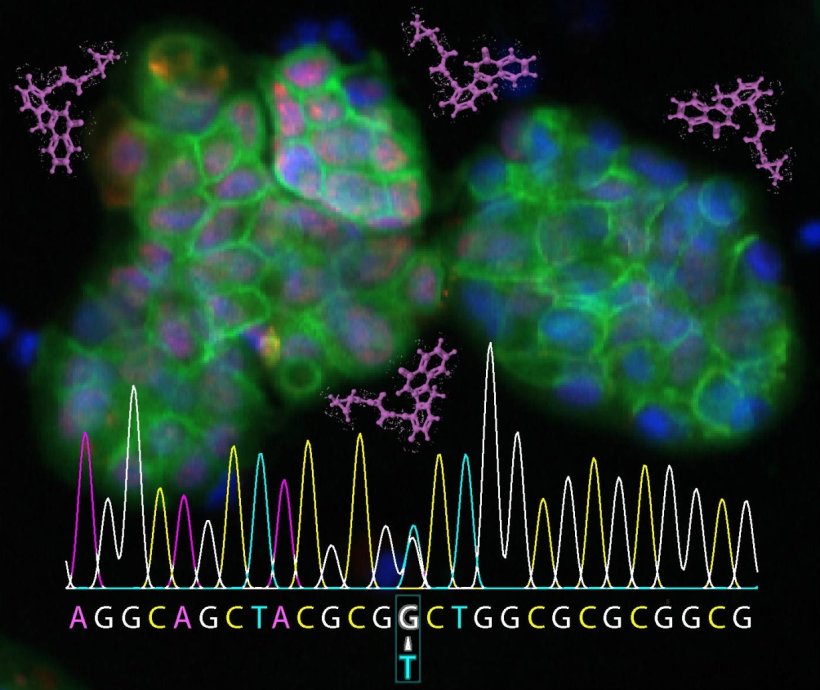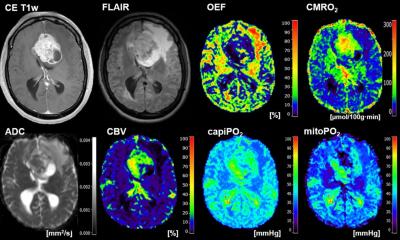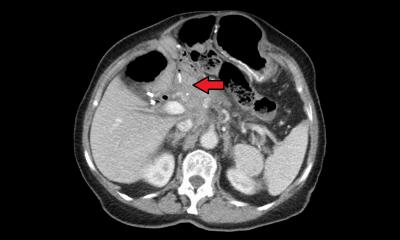
Image source: Heidelberg University Hospital
News • Promising study results
Cancer of Unknown Primary: on the way to targeted therapies
If metastases occur in the body, but the original tumor remains undetectable, this is referred to as “cancer of unknown primary” (CUP).
The problem: if information on the tissue of origin is missing, neither organ-specific chemotherapy nor targeted drugs are available. A large international study involving more than 630 patients from 34 countries shows how this phantom cancer can nevertheless be treated. The results have now been published in the journal “Lancet”: The team led by Professor Dr. Alwin Krämer, Head of the Clinical Cooperation Unit “Molecular Hematology/Oncology” of the Medical Faculty of Heidelberg University and the German Cancer Research Center (DKFZ), Senior Physician at the Department of Hematology, Oncology and Rheumatology at Heidelberg University Hospital (UKHD) and head of the “Carcinoma of Unkown Primary (CUP)” task force at the National Center for Tumor Diseases (NCT) Heidelberg, examined cancer cells and genetic fragments in the blood of study participants for known cancer mutations for which there are already approved drugs available. The team found these in around a third of CUP patients within the trial. Treatment with the appropriate substance significantly extended the time in which the cancer did not progress and probably also overall survival.
Recommended article

Article • Cancer of unknown primary
CUP: in search for the smoking gun
Cancer of unknown primary (CUP) can send radiologists on a frustrating scavenger hunt: metastases were detected but the primary cancer is nowhere to be seen. Professor Alwin Krämer, Head of the Clinical Cooperation Unit Molecular Haematology/Oncology at University Hospital Heidelberg and the German Cancer Research Center, explains strategies for dealing with CUP.
In up to 5% of cancers, no primary tumor can be detected, which massively limits the treatment options for the majority of those affected: they receive non-specific chemotherapy and thus only achieve an average survival time of less than one year. “There have been few new findings on CUP syndrome in recent decades,” says Professor Alwin Krämer. “Studies have only shown that therapies based on molecular analyses to determine the tissue of origin are no more successful than standard chemotherapy. We took a different, primary tumor-agnostic approach and looked for molecular characteristics of the tumor cells - more precisely, the underlying gene mutations - that have already proven to be effective targets in other types of cancer and for which targeted drugs are available.
Based on our results, I assume that around a third of patients could benefit from targeted therapy and gain additional months to years of disease-free survival
Alwin Krämer
A total of 636 patients were included in the study at more than 150 participating clinics. All patients were newly diagnosed with unfavorable subtype CUP. Initially, all patients received three cycles of non-specific standard chemotherapy. The participants in whom the cancer was temporarily halted in this way were then randomly divided into two groups: 110 patients received a further three cycles of standard chemotherapy as a control group. Of the remaining 326 patients, those in whom the scientists found one of twelve selected target mutations were then given the appropriate drug. If none of the sought-after mutations were present, a so-called immune checkpoint inhibitor was given in addition to the chemotherapy, which does not have a targeted effect but stimulates the body's own cancer defenses. During the average two-year follow-up period, the study physicians examined how long the cancer did at least not progress under the respective therapy and when it resumed its growth. There were no differences in the severity of the side effects.
“The comparison between the group with mutation-targeted therapy and the control group is particularly interesting from a medical point of view,” says Prof. Krämer. The difference in the time until the cancer became active again was just under four months on average - eight months for targeted therapy and four months for standard therapy. “In some of the patients with targeted therapy, the cancer had not progressed any further even at the time of the final evaluation. It is therefore possible that the disease will remain under control in the longer term if there is a good response to the therapy,” says Krämer. “Based on our results, I assume that around a third of patients could benefit from targeted therapy and gain additional months to years of disease-free survival. In patients with suitable genetic changes in the cancer cells, this treatment is clearly superior to standard therapy.” The follow-up period of the study continues, so that definitive figures on overall survival will also be available in around a year's time.
The CUPISCO study is not only the largest intervention study of its kind for cancer of unknown primary. In response to the complex patient recruitment process of the CUPISCO trial, the scientists have also centralized and published the globally very heterogeneous diagnostic criteria for CUP syndrome into a new guideline for the diagnosis, differential diagnosis and treatment of this tumor entity. Also new is the proof that the genetic analysis of fragments of the tumor genetic material from blood samples is as reliable as corresponding examinations of tissue samples itself in patients with CUP. “This evidence is extremely important, as tumor biopsies often do not provide enough tissue material for all the necessary analyses, especially in CUP syndrome,” says Krämer. “For targeted treatment, as we have now successfully carried out in our study, we are therefore dependent in many cases on liquid biopsy, i.e. tumor genetic analysis from the blood. In order to improve the care of CUP patients in the future, this method should be approved along with the tissue-based tests already available for CUP diagnostics.”
Based on the results of the CUPISCO study, the scientists conclude that all patients with newly diagnosed CUP syndrome should undergo a genetic analysis of the tumor genome either on tumor biopsy material or a liquid biopsy in order to identify targeted treatment options. This recommendation for tumor genetic analysis and subsequent targeted treatment of patients with CUP syndrome was recently included in the newly formulated European guidelines for mutation analysis and precision medicine treatment of advanced tumor diseases.
Source: Heidelberg University Hospital
04.08.2024






